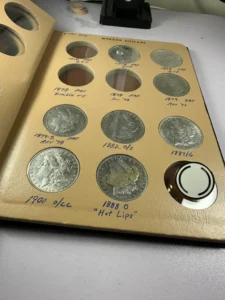So you created a stunning design, an eye-catching illustration, or a pattern that deserves to be seen on everything from phone cases to planners. A brand wants to license it. Woohoo!
But wait… they ask, “Can you send over the contract?”
And suddenly you’re Googling “how to write art licensing contract” while stress-sipping your iced coffee like your life depends on it.
Don’t worry — we’ve got you.
What Is an Art Licensing Contract (and Why You Need One)?
An art licensing contract is a legal agreement between you (the artist/licensor) and the company (the licensee) that wants to use your artwork on their products.
It defines:
Who owns the art (you do!)
What the company can use it for
How long they can use it
Where they can use it
How much they pay you
TL;DR: It’s a document that says “You can use my art for X purpose, for Y time, and pay me Z money. But I still own it.”
Without it, you’re risking miscommunication, lost income, or worse — losing ownership of your own art.
1. Essential Sections of an Art Licensing Contract
Let’s break down what needs to be included, in plain English:
A. Parties Involved
Clearly identify:
The artist/licensor (you)
The client/licensee (brand or company)
Contact info for both
B. Description of the Artwork
List:
Title of the work
Medium and format (digital, vector, etc.)
Image reference or attached files
C. Scope of License
Define exactly what the company can and cannot do.
Usage Rights (e.g., greeting cards, phone cases, social media)
Territory (e.g., US only, global, online-only)
Duration (e.g., 1 year, 3 years, perpetual)
Exclusivity (exclusive vs. non-exclusive)
D. Payment Terms
Clearly state:
Royalty rate (usually 5–10% of wholesale)
Flat fee (one-time upfront payment)
Payment schedule (monthly, quarterly, etc.)
Minimum guarantees (if any)
E. Ownership of Art
State that you retain all copyrights.
The company gets usage rights only — not ownership.
F. Copyright and Credit
Ensure your name or brand is credited where applicable.
Outline how the company can display or present your work.
G. Restrictions
What they can’t do with your art:
Resell the license
Alter the artwork without permission
Use it in harmful or offensive ways
H. Termination Clause
Explain what happens if either party wants to end the deal:
Early termination rights
Breach of contract scenarios
Post-termination obligations (like pulling products off shelves)
I. Legal Language
Governing law (which state/country’s laws apply)
Dispute resolution method (e.g., arbitration, mediation)
CONTRACT TEMPLATE
ART LICENSING AGREEMENT
This Licensing Agreement is made and entered into as of 24th January, 2025, by and between Frank Adrain, with a principal place of business at 145 Oak Street, Denver, CO 80211, and ColorCraft Studios, with a principal place of business at 567 Creative Drive, Suite 200, Denver, CO 80203.
1. DESCRIPTION OF ARTWORK
The Licensor owns the artwork titled “Whispers in the Wind.” A digital representation is attached as Exhibit A.
2. LICENSE GRANT
Licensor hereby grants to Licensee a non-exclusive license to use the Artwork on/in calendars, tote bags, apparel, etc. in the following territory: North America, Global.
3. TERM
This Agreement shall be effective as of 24th January, 2025, and remain in effect until 24th January, 2026, unless terminated earlier in accordance with Section 8.
4. PAYMENT
Licensee shall pay Licensor a royalty of 20% of the wholesale price or a flat fee of $500. Payment shall be made monthly within 7 days of sales reports.
5. OWNERSHIP
Licensor retains all rights, title, and interest in the Artwork. This Agreement does not transfer ownership.
6. CREDIT
Licensee agrees to credit the Artist wherever practical as follows: “Artwork by Frank Adrain”.
7. RESTRICTIONS
Licensee may not:
a. Alter the Artwork without prior written consent
b. Sublicense or transfer rights to third parties
c. Use the Artwork in any illegal, offensive, or defamatory manner
8. TERMINATION
Either party may terminate this Agreement upon 30 days’ written notice. Upon termination, Licensee must cease use of the Artwork and destroy or return all materials.
9. GOVERNING LAW
This Agreement shall be governed by the laws of the State/Country of the United States of America.
IN WITNESS WHEREOF, the parties have executed this Agreement as of the date first written above.
Frank Adrain [Artist Name], Licensor
ColorCraft Studios [Licensee Name], Licensee
Date: _______________ Date: _______________
2. Pro Tips for Writing a Strong Licensing Agreement
Keep It Simple (but Legal)
Use clear language. Fancy legalese might sound cool, but clarity is better.
Instead of: “Heretofore aforementioned Licensor shall hereby…”
Use: “The Artist gives the Company permission to use the artwork for…”
Use Templates (and Then Customize)
Start with a standard art licensing contract template. Customize every section to fit your situation.
Free templates: Docracy, LegalZoom, RocketLawyer
Paid templates: The Contract Shop, Moyo Studio, Art Storefronts
Negotiate Everything
Contracts are not take-it-or-leave-it. Negotiate terms that make sense for:
Your usage preferences
Royalty amounts
Duration and territory
Keep Digital Backups
Save signed copies in multiple places: cloud, external drive, and email.
Hire a Lawyer (if you can)
If the deal is big or you’re unsure, hire an intellectual property (IP) lawyer to review your contract.
Think of it like insurance for your creativity.
3. Art Licensing Contract Example (Super Simplified)
ART LICENSING AGREEMENT
This agreement is made on [Date] between [Your Name], the Artist, and [Brand Name], the Licensee.
ARTWORK: “Ocean Dream” digital illustration.
SCOPE: Licensee may use the Artwork on greeting cards in North America for 2 years.
PAYMENT: Artist will receive a 7% royalty on wholesale sales, paid quarterly.
OWNERSHIP: Artist retains full copyright.
RESTRICTIONS: Licensee may not alter or sublicense the Artwork.
TERMINATION: Either party may cancel with 30 days’ notice.
Signed:
[Your Signature] [Client’s Signature]
Reminder: This is just a rough example. Customize yours based on the project.
5. Common Mistakes to Avoid
No Written Agreement
Verbal agreements = chaos. Always get it in writing.
Giving Away Full Rights
Don’t sell all your rights unless the price is truly worth it.
Forgetting to Include Payment Schedule
Make sure it’s crystal clear when and how you’ll be paid.
Not Limiting Territory
If you only want your art used in Europe, say so. Otherwise, the brand might go global with your work without extra pay.
6. Where to Learn More (and Grow That Licensing Game)
Books:
“Art Money Success” by Maria Brophy
Courses:
Make Art That Sells (MATS), Skillshare on art licensing
Communities:
Facebook groups like “Art Licensing Show”
Never stop learning. Each contract gets easier.
Final Thoughts: Contracts Aren’t Scary. They’re Empowering.
Writing an art licensing contract isn’t just a legal exercise — it’s an act of creative self-respect.
You worked hard to develop your style. Your art has value. A solid contract ensures you get paid for that value without losing control of your work.
So the next time a company says, “We love your art! Can we license it?”
You can smile and say:
“Absolutely. I’ll send over the contract.”
Boss move.






